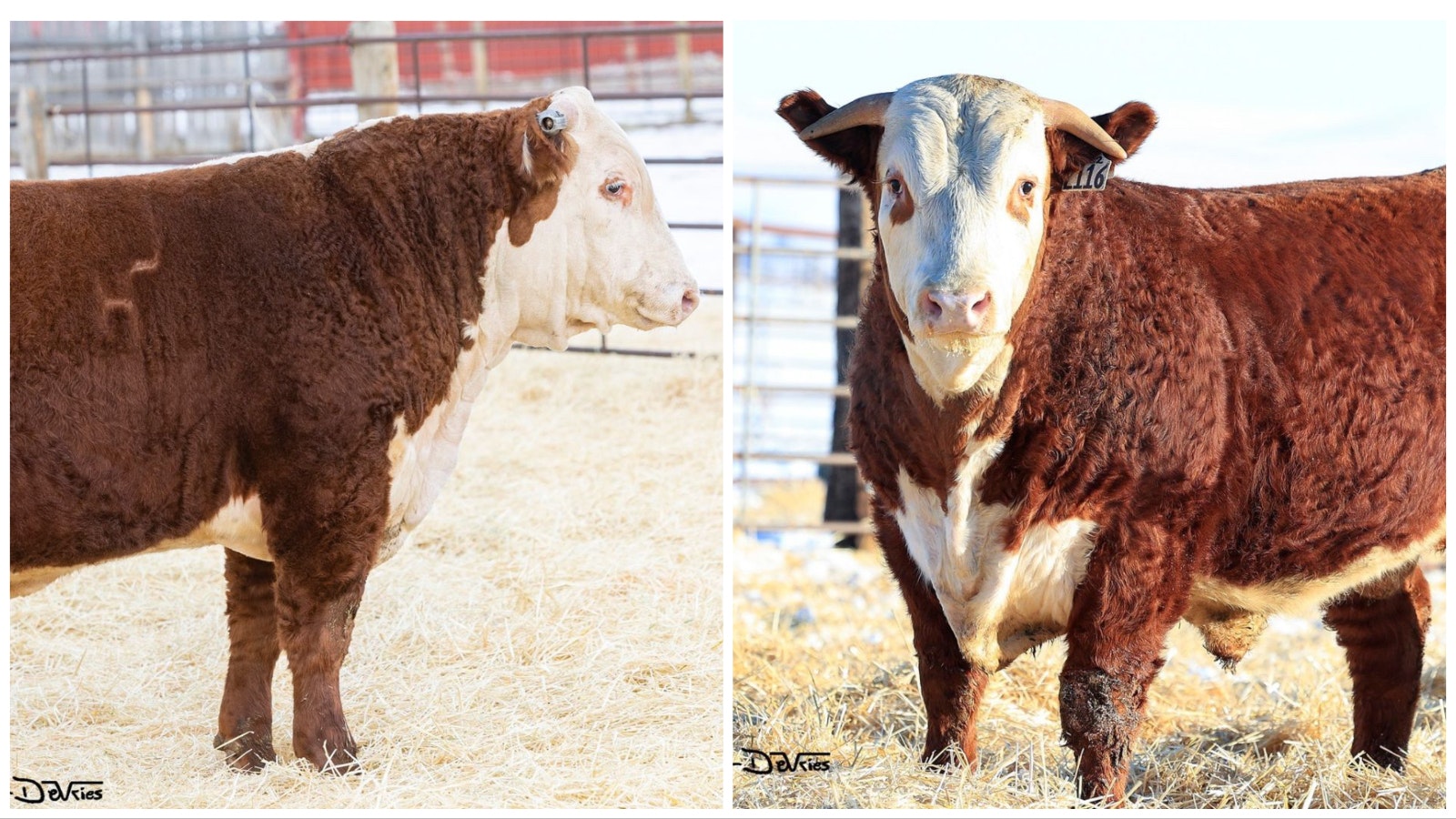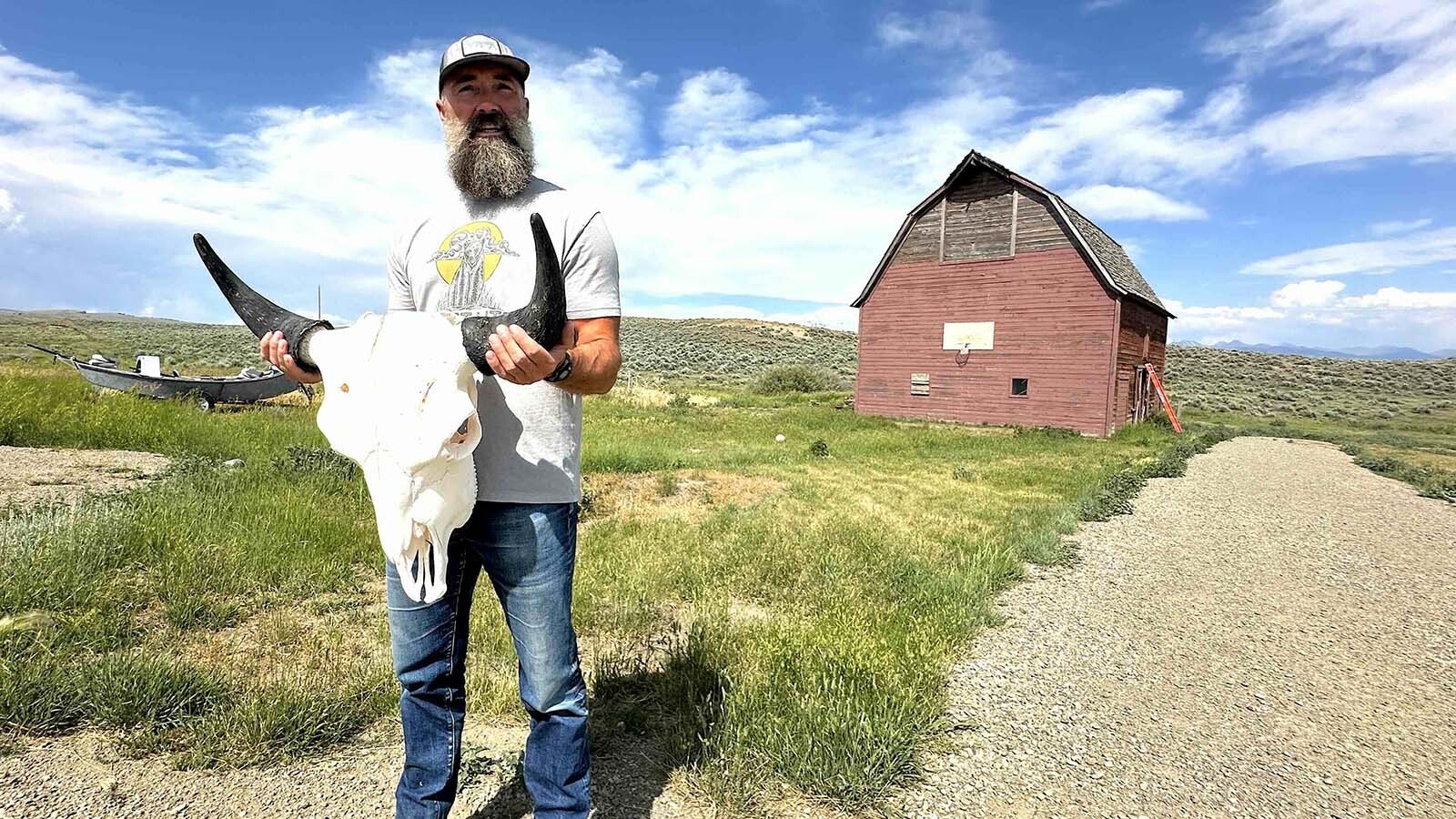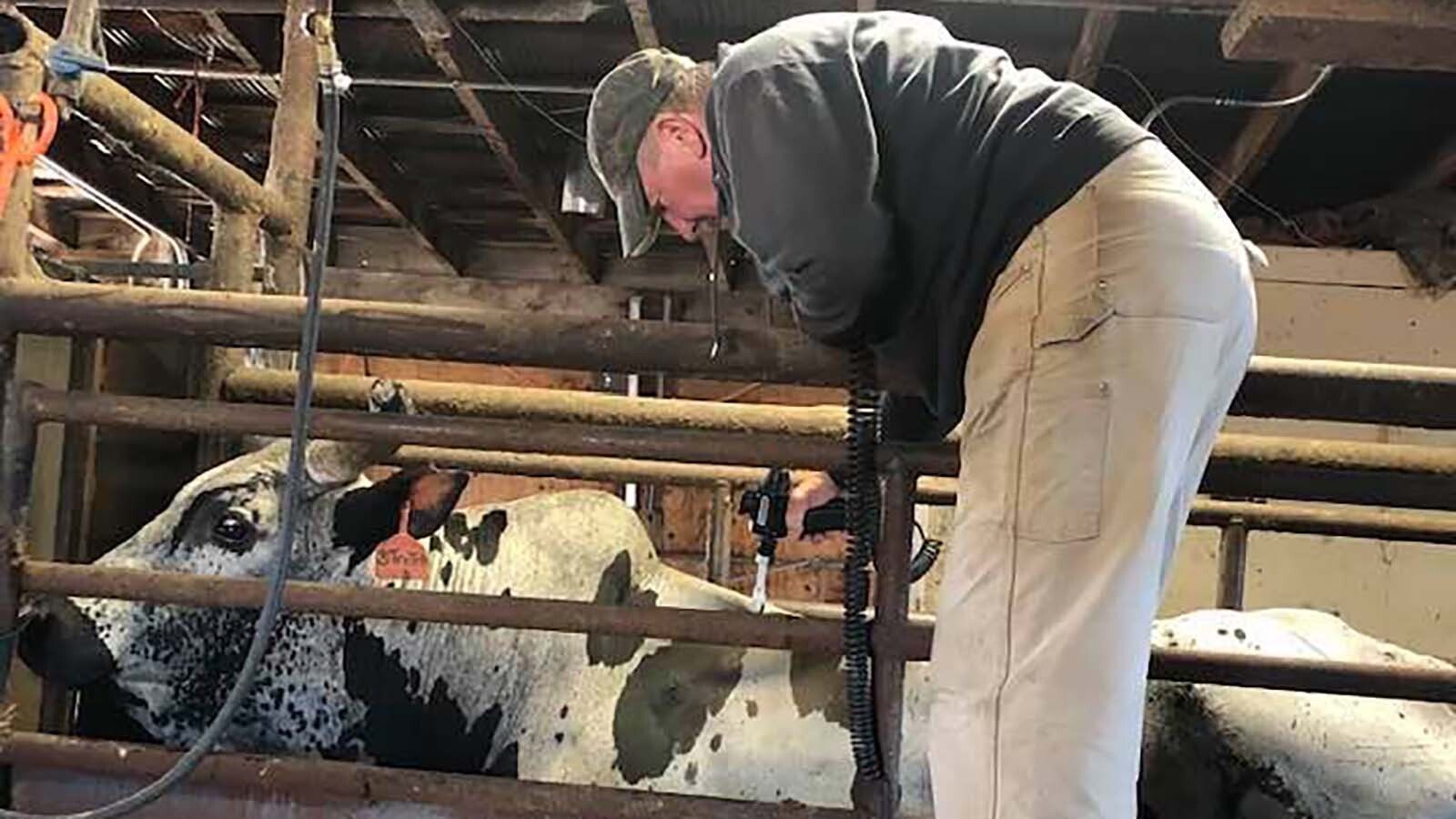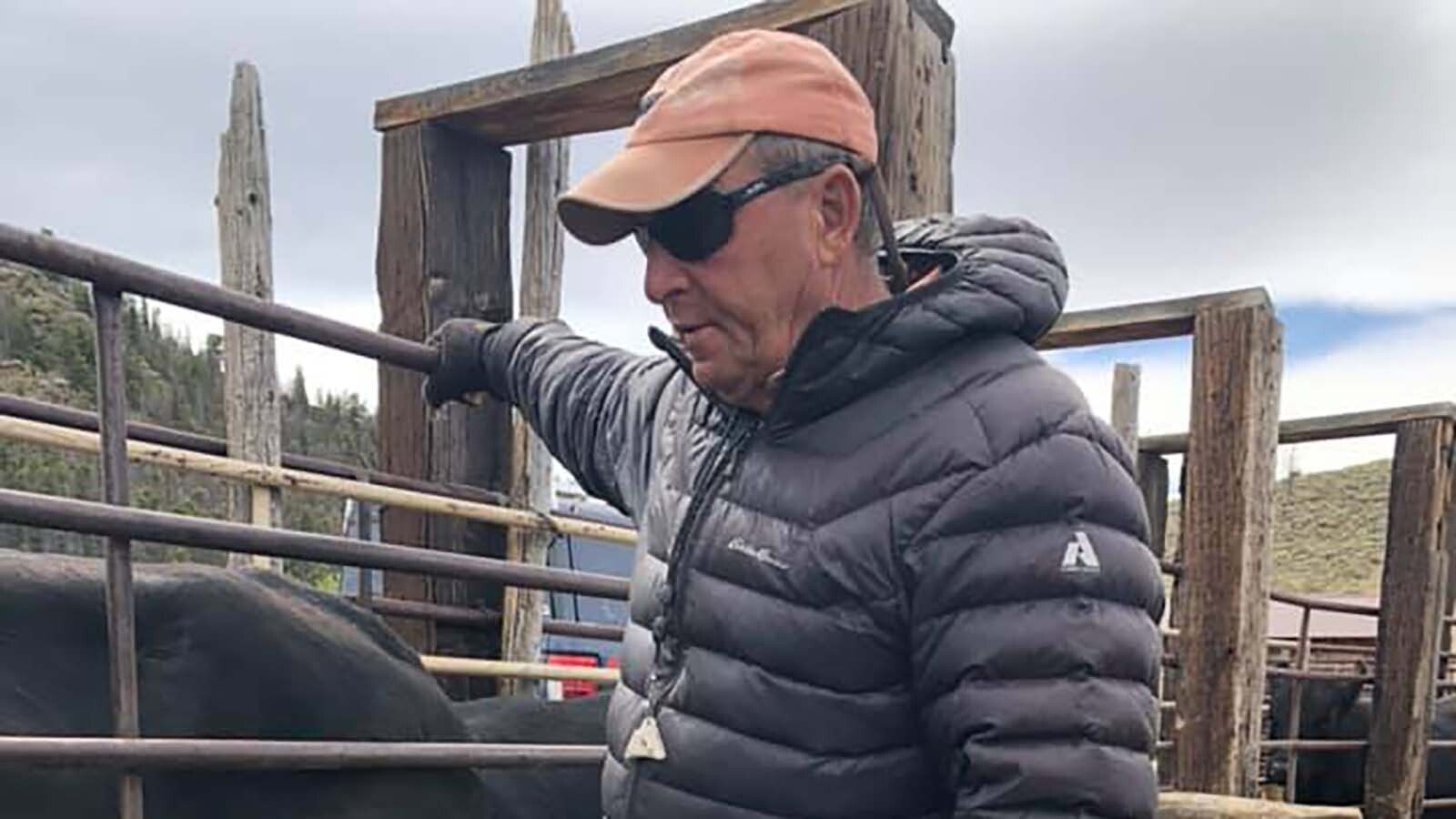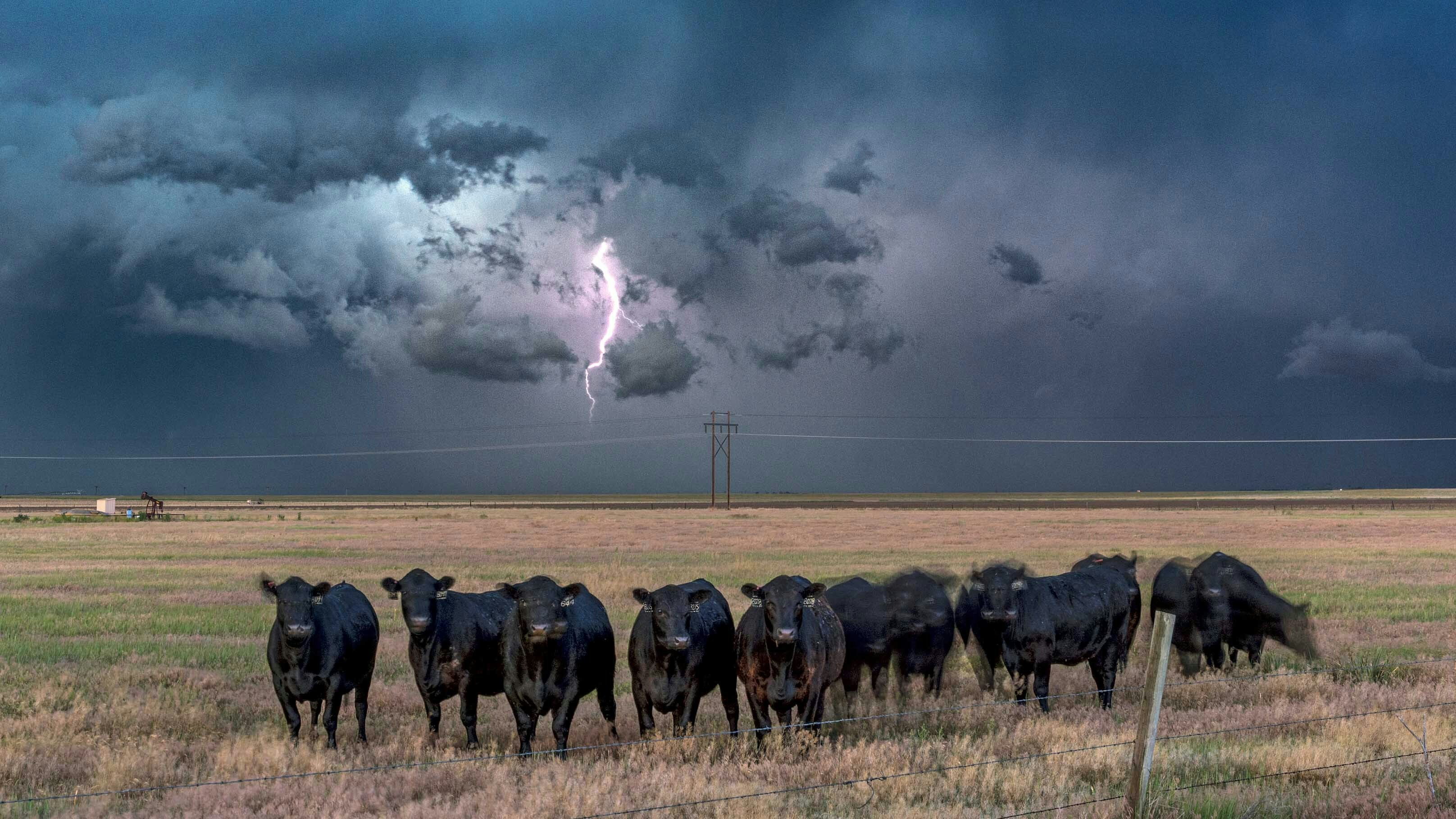How much is a good bull worth?
For a pair of sellers, $100,000 sounds about right.
At the 57th annual Holden Herefords sale last week, two sellers made out better than most, each making bank for one of their bulls.
And while that might seem like a lot of money for one animal, it’s not that far of a stretch, said Mark Eisele, past president of the Wyoming Stock Growers Association and president-elect of the National Cattlemen’s Beef Association.
“It’s not that difficult,” Eisele told Cowboy State Daily about fetching six figures for a bull. “In fact, it’s actually fairly typical in some circles. He’s probably got some very powerful genetics or some very desirable traits that have made him so popular.”


What Makes the Money
The two bulls that pulled in the most money at the Holden Herefords sale March 13 in Montana – lots 2116 and 2054 – were marketed in a Facebook post by the auction house as “one of the most unique and exciting bulls to sell in the US this year,” referring to 2116. “Elite calving ease, carcass and phenotype.”
Those qualities are exactly what breeders are looking for, said Eisele, and why some are willing to shell out $100,000 or more for a bull that will produce offspring with those traits.
“Most of it is probably based on the carcass and the cuts of meat and the amount of meat that will be yielded off of that carcass,” he said.
And when a seller knows that a bull could pull in tens of thousands of dollars at a sale, that affects the rest of the cattle in the auction.
“The tide floats more boats up,” said Eisele. “A lot of times you’ll see the average of bulls pulled up by the top five bulls at a bull sale. They’ll all sell for $10,000, $15,000, $20,000, and it pulls the $3,000 and $4,000 bulls up where they’ve got a $7,000 to $10,000 average.”
Worth The Investment
The buyer’s $100,000 investment can generate that much in return, or more, Eiseler said.
“They will probably hold semen draws, those are called ‘straws,’” he explained, “and they will sell thousands and thousands of those straws to people that artificially inseminate, and those will be fairly high-priced.”
Eisele pointed out that those straws might sell from $15 to $50 each, which would produce a stream of income for several years.
“You can get your money back if the bull and his progeny come out like they’re supposed to,” he said.
But because of the sale of those straws, 2116 and 2054 might never “naturally” breed.
“(They) may never see a conventional cow in the breeding sense,” said Eiseler. “But he’ll have thousands and thousands of progeny, and they will save those straws with nitrogen freezing for years to come.”
Additionally, Eiseler said a buyer will often turn around and sell interests in a high-quality bull.
“There will be people who want to buy a portion of that bull; you know, a 25% interest or 33% interest or something like that, for the same reasons,” he said.

Genetically Superior
Eisele explained that the quality of Wyoming beef has improved considerably over the last 20 years, which hikes up the price for superior breeding cattle.
“The quality of beef has come up so much in the last 20 years,” he said. “The consistency is also tremendous. And so you have these really great carcasses that produce high-grade meat that have excellent marbling. So, you’ve got tenderness, you’ve got flavor, you have all those traits.”
Other traits that producers look for in breeding stock include a pleasing temperament and a high sex drive, as well as producing female offspring that have excellent milking characteristics.
“Their udders are not susceptible to the weather,” said Eisele. “They’re the right size, they’re the right color. They have pigment that doesn’t allow any cancers or the sun or the snow to bother them.”
But Eisele said the high quality of Wyoming beef has caused an interesting conundrum.
“Our beef has become so good, there are no poor cuts on it anymore,” he said. “And so in order to make some of the lean things like some of the hamburger or some of the things for canned meats and stews and those sorts of things, we have to bring in leaner animals (from Mexico and Australia) to produce that.”
Tracking Quality Cattle
But how does a buyer know a bull in a random auction in Montana is worth the investment? Eisele said it comes down to economic strategies – and technology.
“The breed associations track animals,” he said, referring to national organizations such as the American Angus Association, the Red Angus Association or the American Hereford Association. “They have a registered number, and are tracked from before they are even born.”
Eisele said producers large and small use electronic ID ear tags so they can see at a glance the animal’s ownership, health history and vaccinations.
“That chip will hold his mother’s information, his father’s information,” he said. “Electronics make it so much easier in the digital age.”
Eisele pointed out that this process is only followed for registered cattle, not for regular commercial cattle.
“You might have your own records for your herd, and you know who’s good and who’s not good and who you want to keep and who you want to sell,” he said.
The Prestige
While not all cattle producers can aspire to sell an animal for $100,000 or more, it happens more often than one might think, and for varying reasons, including the prestige of owning a high-dollar bull.
A Nebraska bull named Doc Ryan sold at a 2021 auction for $525,000, for example.
“I’ve seen quarter-million-dollar bulls,” said Eisele, who went on to explain that in some cases, it’s simply an advertising gimmick.
“There’ll be some media and print things, you know, like, ‘This is the home of Mr. Mighty the bull,’” he said. “It’s used as a reputation builder to further a ranch’s ability to sell quality animals.”

